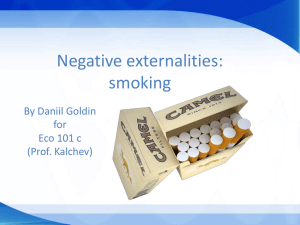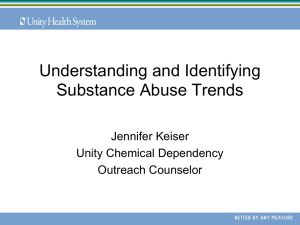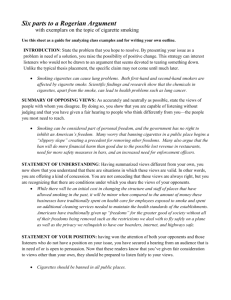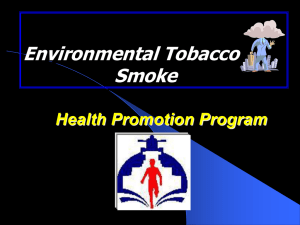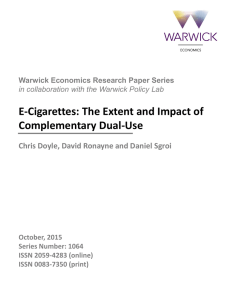Testimony before the New York City Council in Opposition to
advertisement
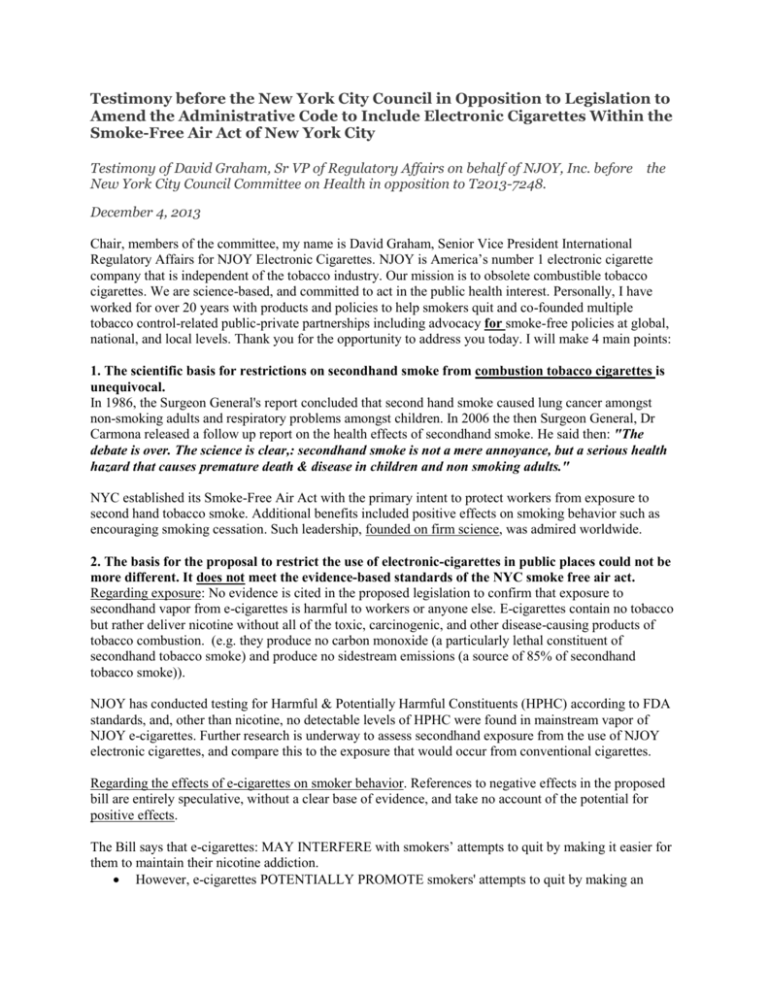
Testimony before the New York City Council in Opposition to Legislation to Amend the Administrative Code to Include Electronic Cigarettes Within the Smoke-Free Air Act of New York City Testimony of David Graham, Sr VP of Regulatory Affairs on behalf of NJOY, Inc. before the New York City Council Committee on Health in opposition to T2013-7248. December 4, 2013 Chair, members of the committee, my name is David Graham, Senior Vice President International Regulatory Affairs for NJOY Electronic Cigarettes. NJOY is America’s number 1 electronic cigarette company that is independent of the tobacco industry. Our mission is to obsolete combustible tobacco cigarettes. We are science-based, and committed to act in the public health interest. Personally, I have worked for over 20 years with products and policies to help smokers quit and co-founded multiple tobacco control-related public-private partnerships including advocacy for smoke-free policies at global, national, and local levels. Thank you for the opportunity to address you today. I will make 4 main points: 1. The scientific basis for restrictions on secondhand smoke from combustion tobacco cigarettes is unequivocal. In 1986, the Surgeon General's report concluded that second hand smoke caused lung cancer amongst non-smoking adults and respiratory problems amongst children. In 2006 the then Surgeon General, Dr Carmona released a follow up report on the health effects of secondhand smoke. He said then: "The debate is over. The science is clear,: secondhand smoke is not a mere annoyance, but a serious health hazard that causes premature death & disease in children and non smoking adults." NYC established its Smoke-Free Air Act with the primary intent to protect workers from exposure to second hand tobacco smoke. Additional benefits included positive effects on smoking behavior such as encouraging smoking cessation. Such leadership, founded on firm science, was admired worldwide. 2. The basis for the proposal to restrict the use of electronic-cigarettes in public places could not be more different. It does not meet the evidence-based standards of the NYC smoke free air act. Regarding exposure: No evidence is cited in the proposed legislation to confirm that exposure to secondhand vapor from e-cigarettes is harmful to workers or anyone else. E-cigarettes contain no tobacco but rather deliver nicotine without all of the toxic, carcinogenic, and other disease-causing products of tobacco combustion. (e.g. they produce no carbon monoxide (a particularly lethal constituent of secondhand tobacco smoke) and produce no sidestream emissions (a source of 85% of secondhand tobacco smoke)). NJOY has conducted testing for Harmful & Potentially Harmful Constituents (HPHC) according to FDA standards, and, other than nicotine, no detectable levels of HPHC were found in mainstream vapor of NJOY e-cigarettes. Further research is underway to assess secondhand exposure from the use of NJOY electronic cigarettes, and compare this to the exposure that would occur from conventional cigarettes. Regarding the effects of e-cigarettes on smoker behavior. References to negative effects in the proposed bill are entirely speculative, without a clear base of evidence, and take no account of the potential for positive effects. The Bill says that e-cigarettes: MAY INTERFERE with smokers’ attempts to quit by making it easier for them to maintain their nicotine addiction. However, e-cigarettes POTENTIALLY PROMOTE smokers' attempts to quit by making an alternative more convenient to use than stepping outside to smoke. Convenience is cited as one of the many important reasons for use of electronic cigarettes. The Bill says that: Children and youth who experiment with electronic cigarettes MAY become addicted to nicotine and then switch to smoking cigarettes. However, E-cigarettes POTENTIALLY DISCOURAGE smoking amongst children and youth by reducing the number of people smoking The Bill says that e-cigs THREATEN to interfere with enforcement of the Smoke-Free Air Act. However, enforcement is POTENTIALLY EASIER where smokers have convenient alternatives. Confusion with real cigarettes is implausible. There is no smell and a simple demonstration of a clean and cold tip by users confirms it is a non-combustion product. The Bill says that e-cigs MAY increase the social acceptability and appeal of smoking, particularly for youth, However use of e-cigs potentially DECREASE the acceptability and appeal of smoking by making it even less acceptable. By normalizing an alternative to smoking, you actually DENORMALIZE use of combustible cigarettes making consideration of an end game for tobacco use, a realistic opportunity. The Bill says that the use of electronic cigarette devices in places where smoking is prohibited COULD send a message that these potentially harmful products are safe However treating e-cigarettes just like combustion tobacco cigarettes potentially REINFORCES continued smoking behavior by raising unjustified concerns that e-cigarettes are hazardous. As a result, fewer smokers would switch away from combustibles, and smokers who switched away from combustibles may return to smoking. Simply put, the case has not been made that such a bill is in the public health interest. It has the potential to be quite the opposite. Restricting use of electronic cigarettes could have the unintended effect of reinforcing combustion cigarette smoking in New York. We encourage the committee to ensure policy is informed by, and does not precede, relevant science. 3. Legislation is premature Rushed regulation is dangerous with increased potential for unintended consequences. More research is needed and should be encouraged to inform future policymaking. Now is not the only opportunity to act. 4. We encourage the City to establish surveillance measures and encourage research to inform future action that can be founded on a firm basis of science. Look beyond the city of New York, and even internationally, for useful ways to do this. e.g. In the UK, a robust population study [West - Smoking Toolkit Study] has recently shown that, as the use of ecigarettes have increased: motivation to quit has increased; actual quit attempts have increased; and the rate of decline in tobacco smoking has accelerated. In the UK, use of e-cigarettes is permitted in smokefree areas and supported by leading anti-smoking organizations. I'll leave you with one quote from Action on Smoking or Health (ASH) UK: "In the UK smokefree legislation exists to protect the public from the demonstrable harms of secondhand smoke. ASH does not consider it appropriate for electronic cigarettes to be subject to this legislation" We encourage the committee to reject this proposal in the absence of evidence that it is positive for public health, and that it has the potential to do more harm than good.


